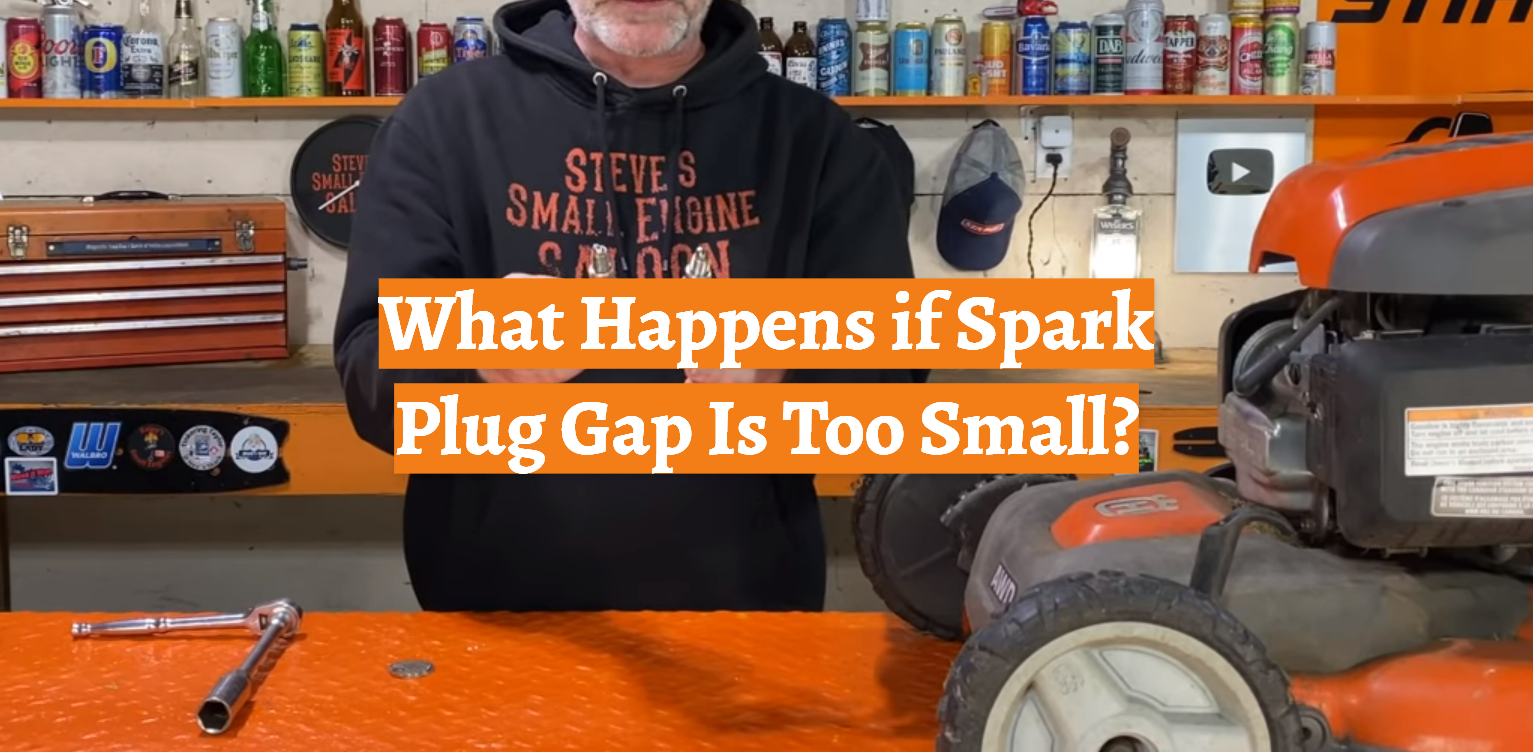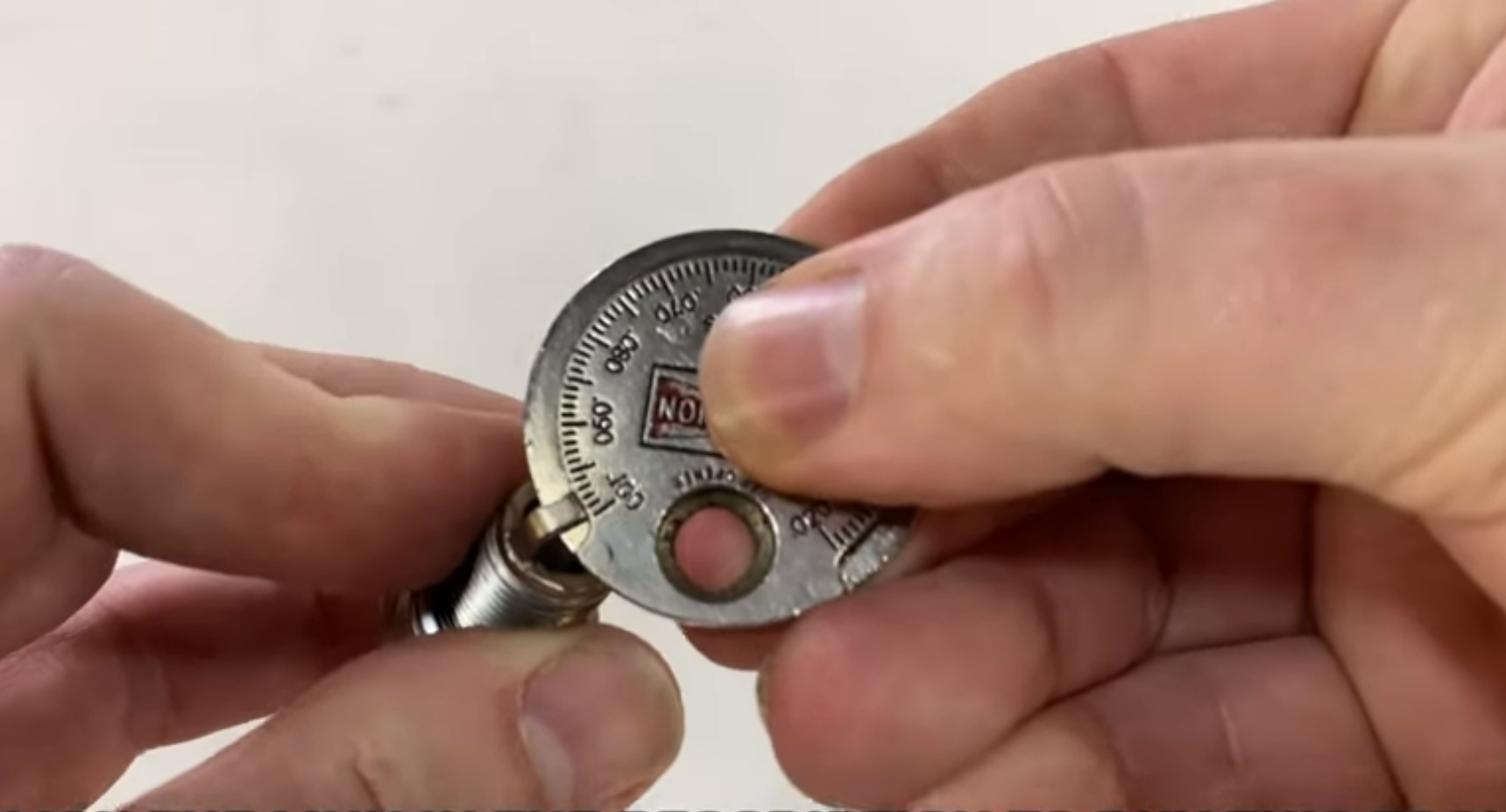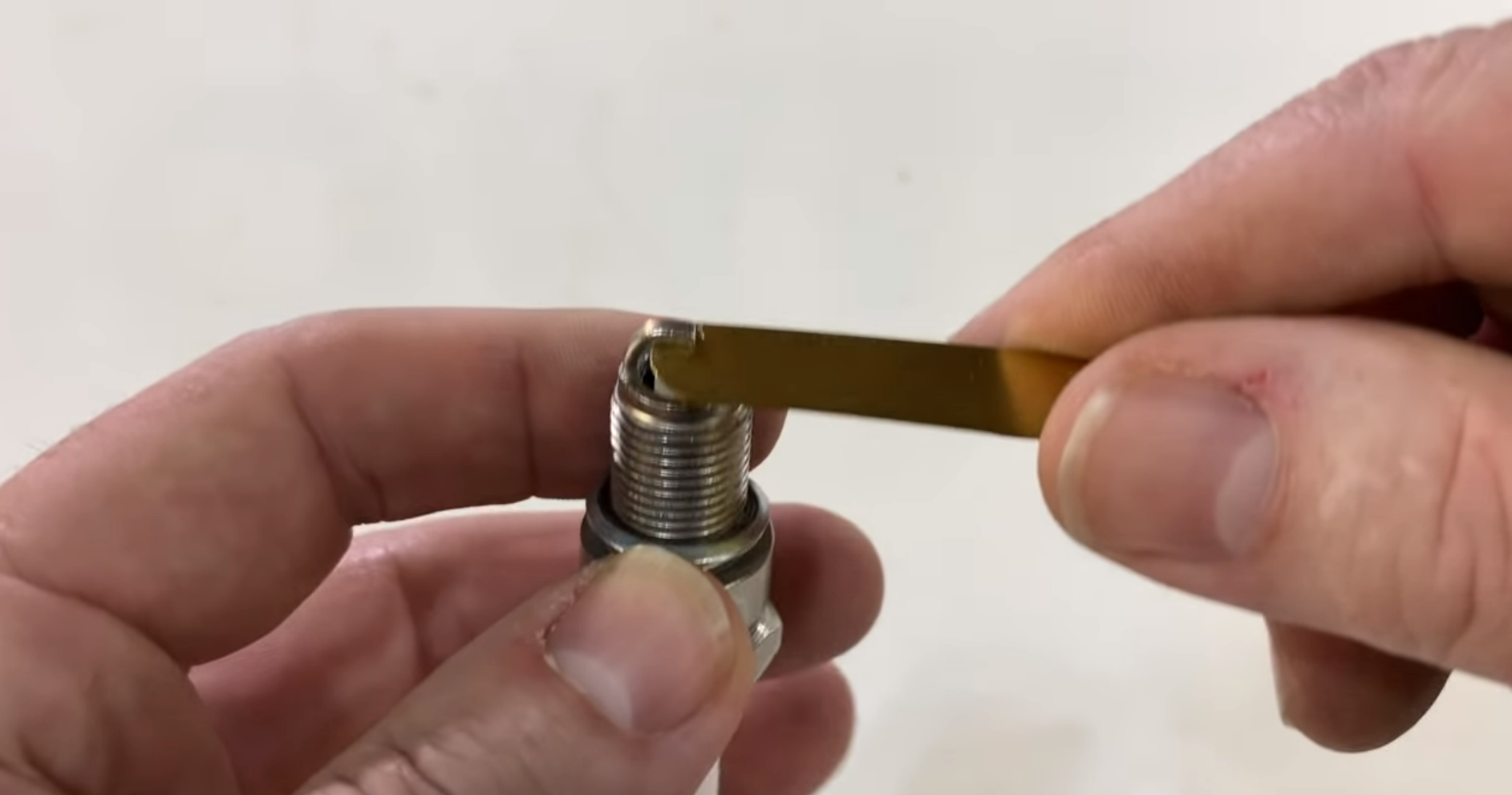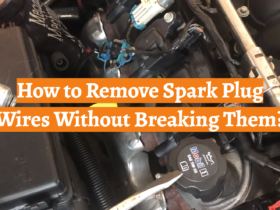When it comes to maintaining an automobile, having a comprehensive understanding of every component is crucial for optimal performance. One such essential component is a glow plug, a small but mighty device that plays a significant role in the smooth functioning of your car’s engine. The plug is designed to light the fuel-air mix, thus creating a controlled explosion that powers your vehicle. However, even the seemingly subtle detail of the spark plug gap can have a major impact on the overall performance and efficiency of your beloved automobile.
Spark gap is the space available for a plug between the middle and ground electrodes of a spark plug. This seemingly minor detail can greatly affect the combustion process, as it determines the intensity and size of the spark.Too little gap in the plug can lead to incomplete combustion, resulting in reduced horsepower, poor fuel efficiency, and increased levels of emissions. On the other hand, too much gap can lead to misfires, reduced engine performance, and potential damage to the ignition system.
Understanding the consequences of having a spark plug gap that is too small is crucial for car owners and enthusiasts alike. By delving into this often overlooked aspect, we can gain a deeper appreciation for the importance of maintaining the correct spark plug gap. So, let us explore the intricacies of this vital component and unlock the secrets to maximizing the performance and efficiency of your cherished vehicle.

What is Spark Plug Gap?
Determining the proper gap for your car’s spark plugs is essential to obtaining optimal motor operation. This info is usually found in your automobile’s user guide, where you can find specific instructions tailored to your vehicle’s make and model. However, if the manual is not available, don’t worry! You can read the recommendations of the plug maker or ask a qualified technician experienced in plug installation for advice.
Why is it important to adjust the gap correctly? Maintaining the correct gap helps prevent ignition breakdowns, which can lead to engine performance problems. It also plays an important role in reducing emissions and maximizing fuel economy, which eventually saves you money at the pump.
It is important to note that although a lower gap may allow for a secure spark, it may not be large enough to effectively ignite the fuel/air mixture. Therefore, adhering to the recommended gap values is crucial to keep your engine running smoothly and get the most out of your vehicle. [1]
Finding the Proper Gap Setting
Discovering the correct gap setting for your vehicle’s spark plugs is vital for achieving optimal engine performance. This information is typically provided in your vehicle’s owner manual, which serves as a comprehensive guide for maintenance and troubleshooting. However, if for some reason the owner manual is not accessible, there are alternative avenues to explore. One option is to consult the spark plug manufacturer’s recommendations, either through their official website or by contacting their customer support. Another option is to seek the advice of a professional mechanic, who possesses the expertise and experience to provide accurate guidance.
There are several tools available to accurately gauge plug gaps. A cable dipstick is the most common choice, allowing for precise measurement of the gap. Alternatively, a disk-style gauge or ramp-style gauge can also be utilized to ensure accurate gap setting. By utilizing these tools, you can fine-tune the spark plug gap to the manufacturer’s specifications, which in turn helps prevent ignition misfires, reduces emissions, and maximizes fuel efficiency.
It’s important to remember that while a smaller gap may provide a reliable spark, it might not be large enough to effectively ignite the fuel-air mixture. Therefore, maintaining the correct gap setting is crucial to provide optimal capacity and durability of your vehicle’s engine. [1]
How Do I Gap a Spark Plug?
Gapping a spark plug requires precision, attention to detail, and a few basic tools. By following a step-by-step process, you can ensure that the spark plug’s gap is set correctly, leading to optimal engine performance. Here’s a more detailed breakdown of the typical steps involved:
- Identify the correct gap size: To begin, consult your vehicle owner’s manual or reach out to the spark plug manufacturer for guidance. Different makes and models may require specific gap sizes, so it’s important to determine the appropriate measurement for your vehicle.
- Inspect the spark plug: Before proceeding, carefully examine the spark plug for any signs of wear or damage. If you notice any abnormalities, such as erosion or cracks, it’s best to replace the spark plug altogether.
- Measure the existing gap: Using a wire feeler gauge, disk-style gauge, or ramp-style gauge, measure the gap between the center and side electrodes of the spark plug. This measurement will help you determine if the gap needs adjustment.Adjust the gap: If the measured gap deviates from the recommended size, it should be adjusted accordingly. To do this, you can gently bend the ground
- electrode using a specialized tool designed for spark plug gap adjustment. It’s crucial to avoid applying force to the delicate center electrode, as this can potentially damage the spark plug.
- Re-measure: After making the necessary adjustment, re-measure the gap to ensure it now matches the required size. This double-checking step helps guarantee that the gap is set correctly.
- Installation: Once you’re satisfied with the gap size, carefully reinstall the spark plug back into the engine. Ensure that it is securely seated and reconnect the wire to complete the installation process.
Always remember that consistency is key. It’s important to maintain the same gap size across all spark plugs in your engine, as this promotes balanced performance and efficient combustion.
By following these detailed steps, you can confidently gap spark plugs and contribute to the overall health and performance of your engine.[2]
Consequences of Incorrect Spark Plug Gap
An incorrect spark plug gap, especially one that is too small, can have significant consequences for your engine’s performance and longevity. Let’s dive into some additional details:
- Poor Fuel Economy: When the spark plug gap is too small, the spark struggles to effectively ignite the fuel-air mixture in the combustion chamber. This incomplete combustion leads to reduced fuel efficiency and an unfortunate decrease in miles per gallon (MPG). As a result, you may find yourself making more frequent trips to the gas station.
- Reduced Engine Performance: The smaller spark plug gap can cause a weaker spark, which directly impacts the engine’s power output. This diminished spark intensity can result in noticeable performance issues, such as sluggish acceleration and a lack of power when climbing uphill. Your vehicle may struggle to keep up with its usual level of performance and responsiveness.
- Increased Emissions: Incomplete combustion, caused by the sub-optimal spark plug gap, also leads to increased emissions. These emissions contribute to environmental pollution and can potentially harm air quality. Additionally, if your vehicle undergoes emissions testing, an incorrect spark plug gap may cause it to fail the compliance standards.
- Potential Engine Damage: In the worst-case scenario, an incorrect spark plug gap can lead to engine misfires. Frequent misfires can cause severe damage to critical engine components such as pistons, rings, or cylinder walls. Over time, this damage may require costly repairs or even a complete engine overhaul.
- Hard Starting: Another consequence of a too-small spark plug gap is difficulty starting your vehicle. The weak spark generated by the smaller gap may not be sufficient to ignite the fuel-air mixture, leading to extended cranking or even failed starts. This can be especially frustrating when you’re in a hurry or dealing with cold weather conditions.
Maintaining the correct spark plug gap is crucial for your vehicle’s overall health and optimal performance. To ensure the right gap size, always refer to your vehicle’s owner manual or consult a professional mechanic experienced in spark plug adjustments. Taking these precautions will help keep your engine running smoothly and efficiently, saving you from potential headaches down the road. [2]
The Objective of Spark Plug
The primary purpose of a spark plug is to ignite the air-fuel mixture within the engine’s combustion chamber, enabling the vehicle to smoothly start and operate. This small yet crucial component achieves this by drawing electrical energy from the ignition system and converting it into a precisely timed spark during the engine’s compression cycle. This spark, carefully initiated at the perfect moment, sets off a controlled combustion process that propels the engine’s pistons, generating the power needed to propel the vehicle forward.
It is essential to emphasize that a properly gapped and functioning spark plug is critical for achieving optimal engine performance, fuel economy, and emission control. By maintaining the spark plug in good condition, you can ensure efficient combustion, maximize fuel efficiency, minimize emissions, and prolong the longevity of your vehicle’s engine. [2]
What Happens if the Spark Plug Gap is Too Small?
When the spark plug gap is too small, it can have a drastic impact on the performance of both the spark plug and the overall operation of the vehicle. Let’s delve into the details of how this occurs.
Firstly, a smaller gap between the spark plug electrodes can result in a weaker spark. This weaker spark has limited ability to effectively ignite the air-fuel mixture within the combustion chamber. As a result, incomplete combustion occurs, leading to reduced fuel efficiency. This decrease in fuel efficiency translates to higher fuel consumption and fewer miles per gallon (MPG) for your vehicle.
Secondly, a smaller spark plug gap can lead to sluggish engine performance. You may notice issues such as limited acceleration or decreased power, especially when driving uphill. This is because the sub-optimal combustion process caused by the smaller gap negatively impacts the overall engine performance.
Lastly, consistent misfires resulting from an inadequate spark due to a small gap can cause significant damage to crucial engine components such as pistons, rings, or cylinder walls over time. Furthermore, a spark plug gap that is too small may also make your vehicle difficult to start. The weak spark may not be strong enough to effectively ignite the fuel-air mixture, leading to starting issues.
Considering the potential complications and impact on vehicle performance, it is crucial to ensure that your spark plugs are appropriately gapped. By maintaining the optimal spark plug gap, you can avoid these issues and enjoy consistent and efficient vehicle performance. [3]
What Should Be the Ideal Spark Plug Gap?
The ideal spark plug gap varies depending on several factors, including the make and model of your vehicle, as well as the type of spark plug you are using. To determine the optimal spark plug gap for your specific vehicle, it is always recommended to consult your vehicle’s owner’s manual or reach out to the spark plug manufacturer.
Deviation from the recommended gap can lead to issues such as decreased engine performance, compromised fuel efficiency, and increased emission levels. To ensure optimal engine performance, it is highly advisable to regularly check and adjust the spark plug gap as part of your vehicle’s maintenance routine. By doing so, you can maintain the efficiency and longevity of your engine, ultimately contributing to a smoother and more reliable driving experience. [3]
FAQ
How do I know if my spark plug gap is too small?
Identifying a small spark plug gap can be challenging, but specific signs can help. One common symptom is decreased engine performance, like reduced acceleration, misfires, or rough idle. Lower fuel efficiency may also occur as the engine struggles to generate power. If your vehicle has difficulty starting, it could indicate a weak spark plug spark. Lastly, if you’ve recently installed new spark plugs and notice these issues, check the spark plug gap.
What are the effects of a spark plug gap too small?
A small spark plug gap can negatively affect engine performance in several ways. It can cause weak sparks, leading to incomplete combustion and resulting in reduced power, poor acceleration, and decreased fuel economy. In severe cases, misfires may occur, causing rough running or stalling. Additionally, a small gap can contribute to increased emissions, harming the environment. Lastly, it can cause increased wear and tear on the ignition system, shortening its lifespan.
Is a bigger or smaller spark plug gap better?
The ideal spark plug gap size depends on your vehicle’s engine requirements. A smaller gap ensures consistent combustion but may lead to weak sparking. A larger gap can enhance engine performance but may cause inconsistent combustion. Adhering to the manufacturer’s recommended gap size ensures reliable sparking and efficient combustion, preserving the engine and ignition system.
Do spark plug gaps have to be exact?
It is important to follow the recommended spark plug gap range provided by the vehicle’s manufacturer. While slight variations within this range are acceptable, significant deviations can cause issues such as unreliable sparking, incomplete combustion, decreased power, increased emissions, and potential damage to the ignition system. While exact precision may not be necessary, adhering closely to the manufacturer’s guidelines is advised for optimal engine performance and longevity.
How tight should spark plugs be?
Properly tightening spark plugs is crucial for optimal engine performance. Follow the manufacturer’s torque setting to avoid damage or costly repairs. Use a torque wrench or hand tighten and add a half turn for a gasketed plug, or a quarter turn for a tapered plug. Refer to the owner’s manual or consult a mechanic for accurate information.
Does spark plug gap affect timing?
The spark plug gap can indirectly affect your vehicle’s engine timing. If the gap is too large or too small, it can impact the ignition system’s ability to generate a timely spark, affecting ignition timing. A small gap can lead to a weak spark and delayed ignition timing. Conversely, a large gap can cause inconsistent combustion and erratic ignition timing. To maintain optimal engine performance, ensure the spark plug gap aligns with the manufacturer’s specifications.
Useful Video: The Spark Plug Gap Is NOT Critical (With SHOCKING Proof)
Conclusion
In conclusion, the gap size of a spark plug plays a pivotal role in the engine’s performance, fuel economy, and emission levels. An overly small gap can lead to weak sparking, incomplete combustion, and increased wear on the ignition system, while an excessively large gap can cause inconsistent sparking and combustion, and potentially harm the ignition system. The correct spark plug gap varies depending on the vehicle’s model and engine type, hence it’s essential to follow the manufacturer’s guidelines for the optimal spark plug gap size. Proper maintenance of spark plugs, including occasional checks and adjustments of the gap, tightening to the recommended torque, and replacement when necessary, will ensure the longevity and optimal performance of your vehicle’s engine. Remember, when in doubt, it’s always wise to consult with a professional mechanic to ensure the best care for your vehicle.
References:
- https://www.championautoparts.com/Technical/Tech-Tips/Spark-Plug-Gap-Tip.html
- https://theautovibes.com/what-happens-if-spark-plug-gap-is-too-small/
- https://vehiclefreak.com/spark-plug-gap-is-too-small-symptoms-what-to-do/















Leave a Review